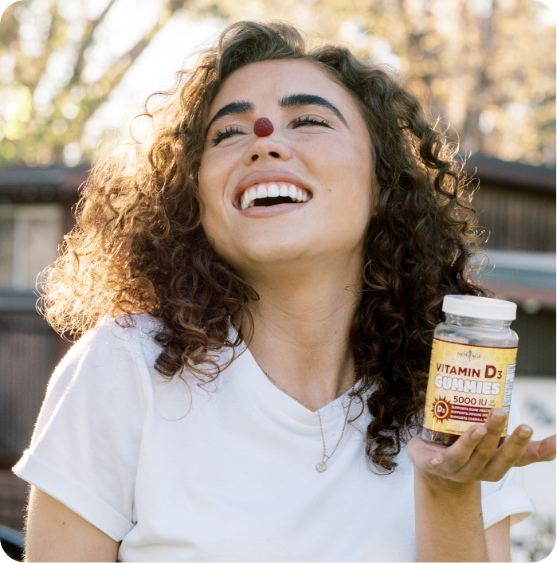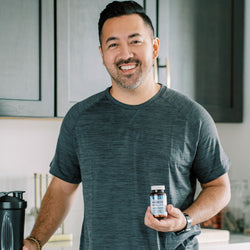Introduction: What is turmeric?
If you are an Asian cooking enthusiast – particularly one who loves Indian food – then you probably are already familiar with its uniquely spicy smell and taste of curry. Most Indian dishes usually use curry, which is identifiable by its unique, bright golden yellow color. The primary ingredient in this type of curry is a powdered form of the turmeric plant. This powdered form can also be used as a dye because of its lovely golden yellow color.
History
Turmeric has a long history as a medicinal herb within the field of Ayurvedic medicine (one of the oldest forms of holistic medicine). Just like other culinary spices and herbs which have medicinal roots, turmeric has a long history as a kind of food therapy, the same as in Chinese herbal medicine.
As a medicinal plant, turmeric's long history dates back to almost 4,000 years ago. In Southeast Asia, it is used both as a spice and an important component in religious ceremonies. Due to its brilliant yellow color, it is also referred to as the “Indian saffron.” Turmeric was used as a culinary spice 4000 years ago by the Vedic culture. It reached China around 700 AD, East Africa around 800 AD, West Africa around 1200 AD, and Jamaica in the 18th century.
Marco Polo, in 1280 described turmeric as a marveling vegetable that exhibited qualities that are much similar to saffron. According to Unami, Ayurvedic, and Sanskrit medical treatises, turmeric has been used for centuries as medicine in South Asia. A good example is Susruta’s Ayurvedic Compendium, which dates to 250 BC – it recommends that an ointment that contains turmeric should be taken to relieve the effects of poisoned food.
Cultivation
Turmeric is obtained from Curcuma longa, a rhizomatous herbaceous perennial plant that belongs to the ginger family, Zingerberaceae, which is a native plant to South Asia. More than 133 species of Curcuma have been identified globally. To thrive, the plant needs a temperature of 20°C - 30°C and a significant amount of rainfall. Individual plants usually grow to a height of 1 meter and have long oblong leaves.
The plants are collected yearly for their rhizomes (or root stalks), and then reseeded from some of the rhizomes in the next season. Turmeric is derived from rhizomes, which are usually tuberous, with a segmented and rough skin. These rhizomes usually mature below the foliage in the ground and are yellowish-brown with a dull orange interior. After the turmeric rhizome has been dried, it can be ground into a yellow powder with a bitter, slightly acrid, and a sweet taste. Turmeric is extremely similar to ginger in shape and appearance.
Medicinal Uses
Throughout the East, turmeric has been traditionally used in therapy and the prevention of diseases. Modern in vitro research studies have shown that turmeric is a strong anticancer, antimicrobial, antimutagenic, anti-inflammatory, and antioxidant agent. It is used both in home remedies and cooking and has a considerable antioxidant ability in different levels of actions. Research has shown that adequate levels of turmeric can be consumed from curries in vivo to make sure you get adequate antioxidant protection. As an antioxidant, turmeric extract inhibits lipid peroxidation (which causes damage to the cells), increases antioxidant enzymes, and scavenges free radicals. It also inhibits lipid peroxidation in renal cells against a hydrogen peroxide-induced injury when incubated for at least 3 hours.
Research has also shown that turmeric exhibits anti-inflammatory activity. In one research study, turmeric extracts were found to inhibit LPS (lipopolysaccharide)-induced production of tumor necrosis factor and prostaglandin. The combination of different factions that contained turmeric oils was far more effective as compared to the curcuminoids in inhibiting the production of PGE2.
Turmeric also has potent antimicrobial properties. Studies have shown that the growth of histamine-producing bacteria can be inhibited by turmeric and garlic extracts at a 5 percent concentration. Turmeric can also inhibit the production of histamine in Morganella morganii. It can also impede the growth of parahaemolyticus.
An extract of turmeric has been shown to inhibit the growth of a number of Helicobacter pylori with a minimum inhibitory concentration range. When compared to licorice, oregano, black caraway, borage, chili, ginger, and cumin, turmeric is very effective in killing H. pylori.
Turmeric’s anticancer activities include inducing apoptosis (death) of cancer cells and inhibiting cell proliferation (growth). Ar-turmerone extracted from turmeric induces apoptosis in human leukemia HL-60 and Molt 4B cells by fragmenting DNA to oligonucleosome-sized fragments, which is a common step in the apoptosis process. Studies have also shown that turmeric extract can repress the production and discharge of hepatitis B surface antigen from HepG 2.2.15 cells.
It has also been reported in various models to exhibit activity against skin cancer, stomach cancer, oral cancer, and breast cancer development. It thwarts carcinogenesis at different steps by inducing apoptosis of tumor cells, decreasing cell proliferation, detoxifying carcinogens, and inhibiting mutation.
Our Featured Product
This is a dietary supplement that supports a healthy inflammatory response and promotes general wellness while supporting skin, joint, immune, and cardiovascular health.
Ingredients
- Turmeric Powder
- Ginger Root Extract
- BioPerine (black pepper extract)
- Cellulose (vegetable capsule)
Advantages of Turmeric Curcumin Capsules
1. Supports Skin Health.
Due to its antioxidant, antimicrobial, and anti-inflammatory properties, turmeric is a potentially effective way of treating skin conditions such as psoriasis, eczema, and acne.
2. Complements Cancer Treatment.
Past research studies have shown that curcumin can help in preventing the formation and the development of tumors.
3. Aids Weight Loss.
Curcumin can help in weight loss, particularly when it is consumed with piperine – black pepper’s active compound. Piperine helps the body to absorb more curcumin.
4. Contributes to Diabetes Treatment.
Due to turmeric’s anti-inflammatory properties, it can help in the treatment of inflammatory conditions such as diabetes. Curcumin can also help in the prevention of Type 2 diabetes by reducing high cholesterol, lowering high blood sugar, and improving insulin resistance.
5. Reduces Depression Symptoms.
Lower levels of BDNF (brain-derived neurotrophic factor) – a protein in the spinal cord and brain that regulates communication between the nerve cells – has been linked with depression. Curcumin can significantly increase the levels of BDNF in the body.
6. Eases Arthritis Pain.
Due to its anti-inflammatory properties, curcumin is an effective treatment for inflammatory conditions like arthritis.
Not a Fan of Swallowing Capsules?
Do you have a hard time with pills or maybe they give you reflux or indigestion? You might want to try our Turmeric Ginger Gummies instead. They have the same beneficial properties of turmeric, but in delicious gummy form.













Unani medicine takes a holistic approach to health, considering the physical, mental, and spiritual aspects of an individual. It emphasizes the importance of balance in bodily humors for overall well-being. Unani medicine is based on the humoral theory, attributing health and disease to the balance or imbalance of four bodily humors: blood, phlegm, yellow bile, and black bile. Treatment aims to restore this balance. The system heavily relies on natural remedies, including herbal medicines, dietary recommendations, and lifestyle modifications. Plants, minerals, and animal products are commonly used in formulations.
unani medicine
Joe Goldberg •